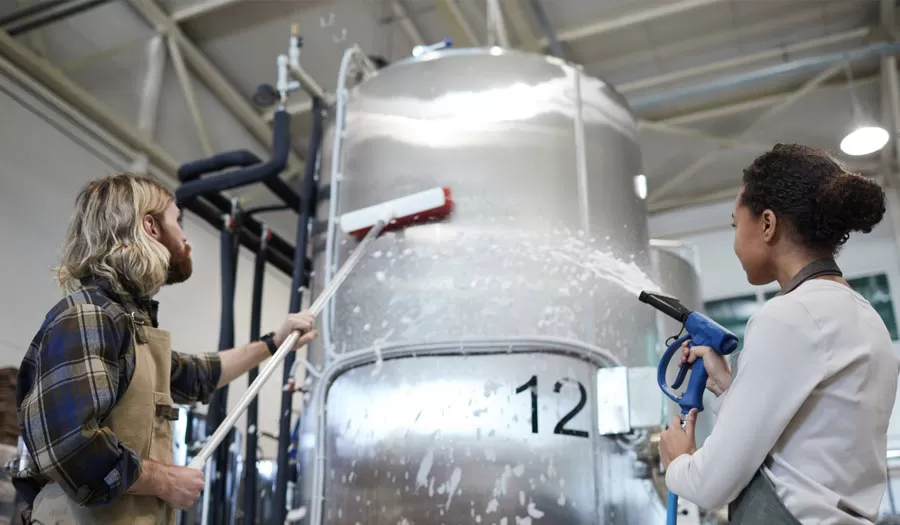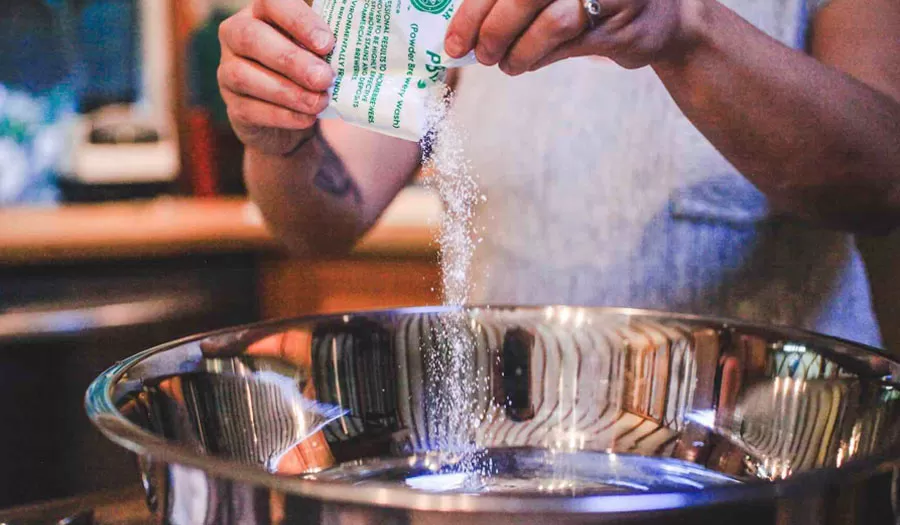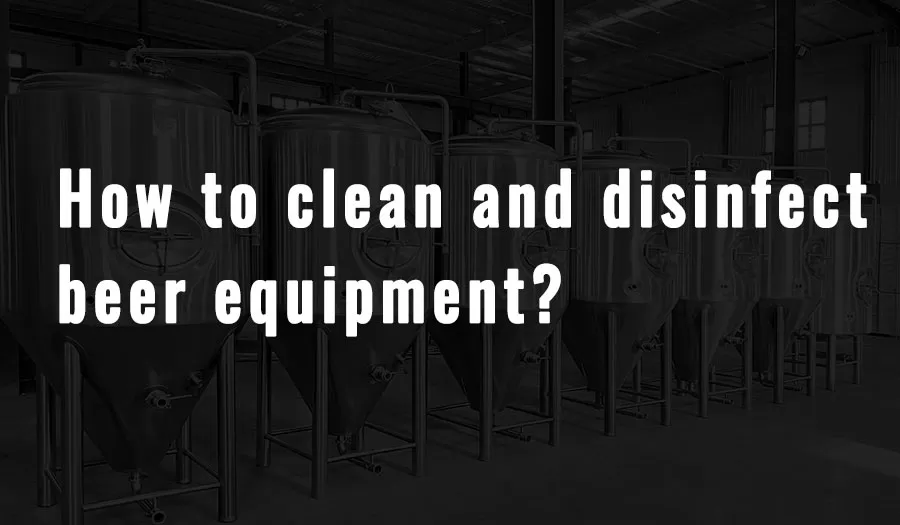Improper cleaning or sanitizing of beer-making equipment is the number one cause of homebrew going bad, so be careful with this step. It will save you a lot of trouble and heartache. Cleaning is what you do when you remove chunks of residual evidence from your last brew, or when you first get your unit from the shop.
When cleaning, you face many questions: which cleaning agent should I use or where should I clean? How do you ensure that your equipment is actually clean and can be sanitized? Here are some tips to help answer all these questions and more.
How to Clean Beer Making Equipment
For cleaning your brewing equipment, there are specialized products that will keep your equipment clean without leaving any residue. But it’s a scent-laden degreaser, so it won’t do us any good to remove protein and mineral scale. Also, spices leave an oily film, which destroys aroma retention and affects flavor.
Bleach is caustic and must be rinsed off , while trisodium phosphate (TSP) is not friendly. A strong alkaline cleaner designed for brewing.
A special cleaner is a good option. These brewery cleaners are safe for all the materials we use in our brewing process.

Tips for Maintaining Brewing Equipment
- Do not use cl-detergents or disinfectants.
- If you do not use your device for a long time, please be sure to clean it . Clean the device before using it again.
- After long-term operation or long-term use of the heat exchanger, it should be disassembled and cleaned. Replace the aging gasket in time.
- check the motor, pump connection and grounding to ensure proper connection. Check the oil level of the geared motor and hydraulic unit. Add lubricating oil according to the instructions. check the tightness of mixing and tillage accessories. All used water pumps must not be idling or reversed, and if leakage is found, the water pump sealing ring should be replaced in time.
- check whether there are foreign objects and impurities in the pulverizer hopper, check whether the fasteners of the pulverizer are loose, check the tightness of the pulverizer drive belt and the reliability of the safety protection device. Clean the grinding rollers .
- check the pressure gauge and safety valve of the steam heating equipment to ensure that the steam trap is unblocked. When steam, wort and other high-temperature pipelines and saccharification equipment are in operation, warning signs should be hung on the top to prevent scalding.
- When filtering, do not extract the wort with a large flow, and damage the sieve plate!
- Check the plate heat exchanger for leakage, leakage and liquid flow at any time, and repair it immediately if there is any.
- Pay attention to the concentration of alkaline water in the alkaline water tank at any time. If the concentration of alkaline water is found to be too low or too turbid, it should be replaced in time for washing.
- Check all pipeline valves at any time. If a leak is found, it should be repaired or replaced immediately.

How to Clean Fermentation Equipment
For more difficult-to-clean fermentation equipment like taps, racks, siphons, and even pipes, the only real option is to rinse and soak.
Disassemble and scrub as completely as possible. Soaking with a strong cleaner must be done immediately after use or it will leave deposits that cannot be cleaned. Improper cleaning prevents proper hygiene and can lead to spoiled, infected beer.
Any plastic will eventually need to be replaced, whereas steel and silicone will not. If you have an infection, consider suspecting any plastic – it may need a very thorough cleaning. It is safer to replace the siphon and pipe. Most home brewers replace these items every 6 months to avoid problems.
Tips for Maintaining Beer Fermentation Tanks
Beer fermentation tanks can withstand steam sterilization, have certain operational flexibility, minimal internal accessories (avoid dead ends), strong material and energy transfer performance, are adjustable, easy to clean, reduce pollution, suitable for the production of various products and reduce energy consumption.
- Water leaks at the joints of the inlet pipe and the outlet pipe. If the problem cannot be solved by tightening the joints, the packing should be added or replaced.
- The pressure gauge and safety valve should be checked , and if there is any failure, it should be replaced or repaired in time.
- When cleaning the fermenter, please use a soft brush to scrub, do not scratch with hard tools, so as not to damage the surface of the fermenter.
- The supporting instruments should be calibrated once a year to ensure normal use.
- Electrical equipment, instruments, sensors and other electrical equipment are prohibited from direct contact with water and steam to avoid moisture.
- When the equipment is out of use, it should be cleaned in time to drain the remaining water in the fermentation tank and each pipeline; loosen the fermentation tank cover and hand hole screws to avoid deformation of the sealing ring.
- If the fermenter is not in use , it is necessary to empty the fermenter and drain the remaining water in the tank and in each pipeline.
Brewery Brewing Consulting
If you want to start your own wine making business. MICET has been working on micro beer and beverage projects, we can help you with any turnkey. Check out our professional brewing consulting services available.




